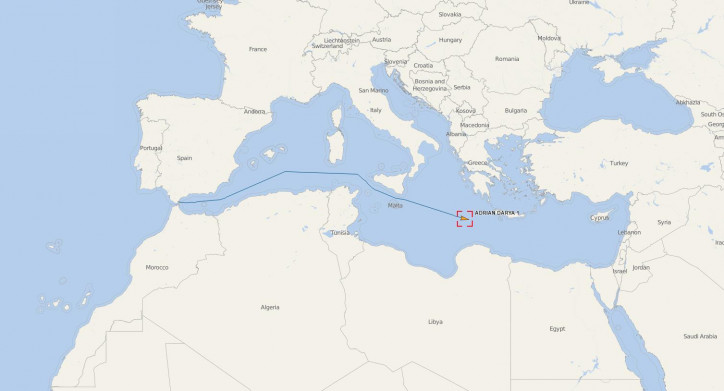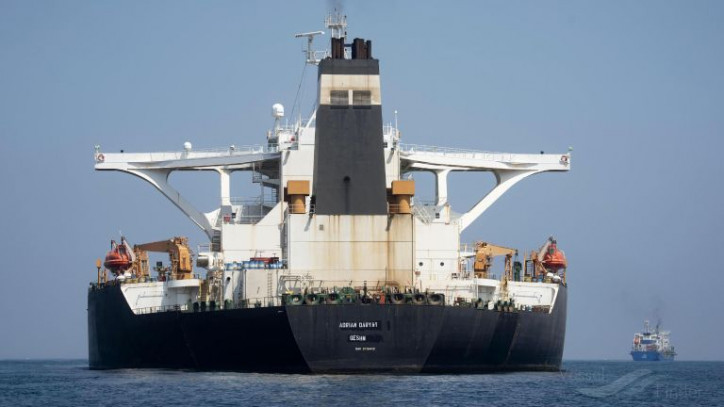The Iranian oil tanker Adrian Darya 1 that the U.S. sought to seize in Gibraltar was about halfway into the Mediterranean Sea without declaring a destination on Sunday amid mounting speculation over where the roughly 2 million-barrel cargo of crude on board will end up.
The Adrian Darya 1 changed the signal sent from the ship’s AIS transponder to “For Order,” a designation meaning the vessel isn’t disclosing any destination, according to the AIS reported data. The ship on Saturday signaled Turkey’s port of Mersin, switching from the previous target of Kalamata in Greece. Greek officials said the ship would be unwelcome after the U.S. threatened sanctions against anyone aiding the tanker, while a stop in Turkey would also pose complications in an already fraught relationship.

Iran’s tanker fleet is under intense scrutiny as the U.S. seeks to cut off the Islamic republic’s ability to sell crude, normally the country’s main export earner. Iran’s oil sales have tumbled under U.S. sanctions threatening to punish most interactions with the Iranian government over its nuclear program. Iran and other signatories to the 2015 nuclear agreement with the Islamic Republic oppose the U.S. measures.
By Sunday morning, the Adrian Darya 1, which had changed names from Grace 1, had passed below the Italian island of Sicily. The Trump Administration is seeking to block the tanker’s voyage by threatening sanctions to stop the ship from being able to call in any port or offload any oil.
The vessel may seek to transfer the crude to smaller ships for delivery to Turkey or Syria and could “go dark,” turning off its satellite transponder to mask the location of any unloading. The vessel’s current trajectory could lead to any of the ports in the eastern Mediterranean or, potentially, to the Suez Canal.
Last known position of Adrian Darya 1

The Adrian Darya 1 wouldn’t be able to transit Suez without offloading some of the oil on board since a fully laden tanker of that size would sit too deep in the water to make the passage. The Suez Canal leads to the Red Sea and from there the vessel could sail on to the Persian Gulf and Iran.
The Adrian Darya 1 resumed the journey last week after being released by authorities in Gibraltar. British authorities had blocked the vessel, alleging the crude on board was headed to Syria.
If Turkey were to accept the ship or allow an oil transfer in its waters, that would risk further fueling tensions with the U.S., at a time when relations have been strained over Turkey’s decision to buy a missile defense system from Russia. Turkey’s government declined to comment on whether they would allow the ship to dock at Mersin.
A U.S. attempt to seize the tanker before leaving Gibraltar was denied by a court in Gibraltar. A court in the territory refused the petition from the American government since, while European Union rules prohibit dealing with sanctioned entities in Syria, they are less comprehensive than U.S. sanctions law with regards to Iranian oil sales.
Source: Bloomberg
Related articles:
August 26: Released Iranian Oil Tanker Switches Direction, Heads for Turkey
August 22: What we know about the ongoing “Tanker War” between Iran, Britain, US
July 5: VLCC Grace 1, oil cargo seized for breaching EU sanctions on Syria: Gibraltar govt